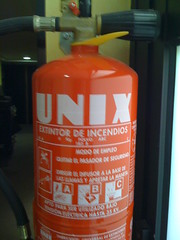

| Main index | Section 2 | Options |
#include <sys/types.h>
#include <sys/ipc.h>
#include <sys/msg.h>
Each message queue has a data structure associated with it, parts of which may be altered by msgctl() and parts of which determine the actions of msgctl(). The data structure is defined in <sys/msg.h> and contains (amongst others) the following members:
struct msqid_ds {
struct ipc_perm msg_perm; /* msg queue permission bits */
msglen_t msg_cbytes; /* number of bytes in use on the queue */
msgqnum_t msg_qnum; /* number of msgs in the queue */
msglen_t msg_qbytes; /* max # of bytes on the queue */
pid_t msg_lspid; /* pid of last msgsnd() */
pid_t msg_lrpid; /* pid of last msgrcv() */
time_t msg_stime; /* time of last msgsnd() */
time_t msg_rtime; /* time of last msgrcv() */
time_t msg_ctime; /* time of last msgctl() */
};
The ipc_perm structure used inside the msqid_ds structure is defined in <sys/ipc.h> and looks like this:
struct ipc_perm {
uid_t cuid; /* creator user id */
gid_t cgid; /* creator group id */
uid_t uid; /* user id */
gid_t gid; /* group id */
mode_t mode; /* r/w permission */
unsigned short seq; /* sequence # (to generate unique ipcid) */
key_t key; /* user specified msg/sem/shm key */
};
The operation to be performed by msgctl() is specified in cmd and is one of:
| IPC_STAT | Gather information about the message queue and place it in the structure pointed to by buf. |
| IPC_SET | Set the value of the msg_perm.uid, msg_perm.gid, msg_perm.mode and msg_qbytes fields in the structure associated with msqid. The values are taken from the corresponding fields in the structure pointed to by buf. This operation can only be executed by the super-user, or a process that has an effective user id equal to either msg_perm.cuid or msg_perm.uid in the data structure associated with the message queue. The value of msg_qbytes can only be increased by the super-user. Values for msg_qbytes that exceed the system limit (MSGMNB from <sys/msg.h>) are silently truncated to that limit. |
| IPC_RMID | Remove the message queue specified by msqid and destroy the data associated with it. Only the super-user or a process with an effective uid equal to the msg_perm.cuid or msg_perm.uid values in the data structure associated with the queue can do this. |
The permission to read from or write to a message queue (see msgsnd(2) and msgrcv(2)) is determined by the msg_perm.mode field in the same way as is done with files (see chmod(2)), but the effective uid can match either the msg_perm.cuid field or the msg_perm.uid field, and the effective gid can match either msg_perm.cgid or msg_perm.gid.
| [EPERM] | |
|
The
cmd
argument
is equal to IPC_SET or IPC_RMID and the caller is not the super-user, nor does
the effective uid match either the
msg_perm.uid
or
msg_perm.cuid
fields of the data structure associated with the message queue.
An attempt is made to increase the value of msg_qbytes through IPC_SET but the caller is not the super-user. | |
| [EACCES] | |
| The command is IPC_STAT and the caller has no read permission for this message queue. | |
| [EINVAL] | |
|
The
msqid
argument
is not a valid message queue identifier.
cmd is not a valid command. | |
| [EFAULT] | |
| The buf argument specifies an invalid address. | |
| MSGCTL (2) | July 9, 2020 |

| Main index | Section 2 | Options |
Please direct any comments about this manual page service to Ben Bullock. Privacy policy.
